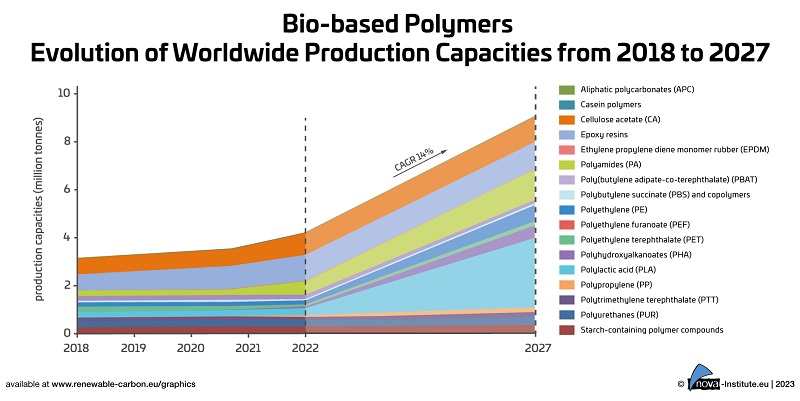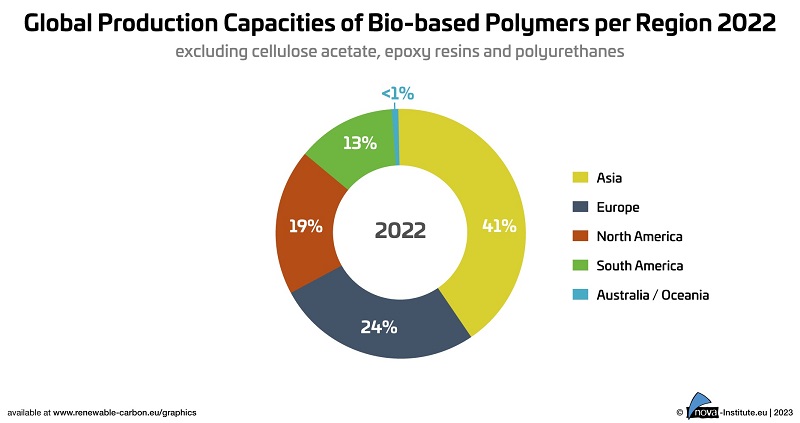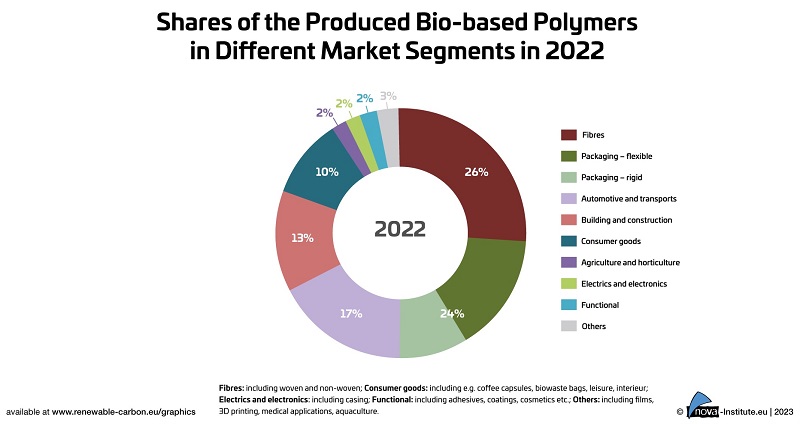Bio-based polymers grow at CAGR of 14% in 2022 - 2027, says nova-Insti…
main text
Bio-based polymers grow at CAGR of 14% in 2022 - 2027, says nova-Institute
According to the new market and trend report “Bio-based Building Blocks and Polymers – Global Capacities, Production and Trends 2022-2027” by nova-Institute, a private and independent research institute, the year 2022 was a promising year for bio-based polymers.
Bio-based epoxy resin production is on the rise, PTT regained attractiveness after several years of constant capacities and PE and PP made from bio-based naphtha are being further established with growing volumes.

Increased capacities for PLA are ongoing, after being sold out in 2019. Current and future expansions for bio-based polyamides as well as PHAs are on the horizon. And also, bio-based PET is getting back in the game.
In 2022, the total installed capacity in 2022 was 4.9 million tonnes with an actual production of 4.5 million tonnes, which is 1% of the total production volume of fossil based polymers. An increase to 9.3 million tonnes capacity in 2027 is expected, indicating an average CAGR of about 14%, significantly higher than the overall growth of polymers (3-4%).
The following polymers show an even higher increase significantly above the average growth rate: PHA will grow by 45%, PLA by 39%, PA will continue to grow by 37% and PP by 34% until 2027. PE in Europe will increase by 18% until 2027, followed by a 15% increase in casein polymers.

After Asia as leading region, which has installed the largest bio based production capacities worldwide with 41% in 2022, the largest capacities being for PLA and PA, Europe follows with 27%, mainly based on starch-containing polymer compounds, PE and PP.
North America shares 19% with major installed capacities for PLA and PTT and South America 13%, mainly based on PE. The less than 1% share of Australia/Oceania is based on starch-containing polymer compounds.
Today, bio based polymers can be used in almost all market segments and applications, but the various applications per polymer can be very different.

The major feedstock used for bio-based polymer production are sugars (29%), starch is used with 18%. These feedstocks are gained from high-yielding sugarcane and maize resulting in high area efficiency.
Additionally, these yields are not only used for polymer production but also for animal feed, regarding the protein share, and thus only a part is allocated. Glycerol (27%) a by-product from biodiesel production represents a biomass without additional land use.
Several global brands are already expanding their feedstock portfolio to include, next to fossil-based, also sources of renewable carbon, CO2, recycling and especially biomass.
This rethinking from the market point of view, especially in the use of biomass, will, and already did, increase the demand and supply of bio-based as well as biodegradable polymers. Today, renewable carbon from biomass, CO2 and recycling is making up 11% of the worldwide polymer market.
Nevertheless, at the same time, there is a lack of support from policy in Europe, which still only promotes biofuels and bioenergy. In contrast, supportive regulations for bio-based chemicals and polymers can be found in Asia and especially in the US.
Source : https://www.adsalecprj.com/en/news_show-79879.html
Edit : HANDLER
